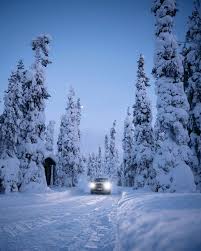Stamp: A dogsled in the St. Elias mountain range, Yukon (Canada 2006)
A dogsled in the St. Elias mountain range, Yukon (Canada 2006)
31 July (Canada ) within release Definitives 1989-2005: Canadian Flag goes into circulation Stamp A dogsled in the St. Elias mountain range, Yukon face value 51 Canadian cent
| Stamp A dogsled in the St. Elias mountain range, Yukon in catalogues | |
|---|---|
| Stamp Number: | Sn: CA 2139i |
Stamp is vertical format.
Single from Booklet pane (Sn CA 2139aii) (BK327Aa), by Lowe-Martin on TRC Paper. General Tagging along all edges of stamp.Also in the issue Definitives 1989-2005: Canadian Flag:
- Stamp - A dogsled in the St. Elias mountain range, Yukon face value 51;
- Stamp - A winter scene near New Glasgow, Prince Edward Island face value 51;
- Booklet - Flag Booklet 2006 face value 10*51;
- Booklet Pane - Flag Booklet 2006 face value 10*51;
- Se-tenant - Flag over New Glasgow, PEI, N.B, Manitoba, Alberta, and Yuko face value 5*51;
- Stamp - Southwest bastion, Lower Fort Garry National Historic Site face value 51;
- Stamp - The Bridge at Bouctouche, New Brunswick face value 51;
- Stamp - Wind turbines at Picher Creek, Alberta face value 51;
Stamp A dogsled in the St. Elias mountain range, Yukon it reflects the thematic directions:
The domestic dog (Canis lupus familiaris or Canis familiaris) is a member of genus Canis (canines) that forms part of the wolf-like canids, and is the most widely abundant carnivore. The dog and the extant gray wolf are sister taxa, with modern wolves not closely related to the wolves that were first domesticated. The dog was the first domesticated species and has been selectively bred over millennia for various behaviors, sensory capabilities, and physical attributes. Their long association with humans has led dogs to be uniquely attuned to human behavior and they are able to thrive on a starch-rich diet that would be inadequate for other canid species. Dogs vary widely in shape, size and colours. Dogs perform many roles for people, such as hunting, herding, pulling loads, protection, assisting police and military, companionship and, more recently, aiding handicapped individuals. This influence on human society has given them the sobriquet "man's best friend".
A flag is a piece of fabric (most often rectangular or quadrilateral) with a distinctive design that is used as a symbol, as a signaling device, or as decoration. The term flag is also used to refer to the graphic design employed, and flags have since evolved into a general tool for rudimentary signalling and identification, especially in environments where communication is similarly challenging (such as the maritime environment where semaphore is used). National flags are patriotic symbols with varied wide-ranging interpretations, often including strong military associations due to their original and ongoing military uses. Flags are also used in messaging, advertising, or for other decorative purposes. The study of flags is known as vexillology, from the Latin word vexillum, meaning flag or banner.
A sled, skid, sledge, or sleigh is a land vehicle that slides across a surface, usually of ice or snow. It is built with either a smooth underside or a separate body supported by two or more smooth, relatively narrow, longitudinal runners similar in principle to skis. This reduces the amount of friction, which helps to carry heavy loads.
Snow comprises individual ice crystals that grow while suspended in the atmosphere—usually within clouds—and then fall, accumulating on the ground where they undergo further changes. It consists of frozen crystalline water throughout its life cycle, starting when, under suitable conditions, the ice crystals form in the atmosphere, increase to millimeter size, precipitate and accumulate on surfaces, then metamorphose in place, and ultimately melt, slide or sublimate away.




